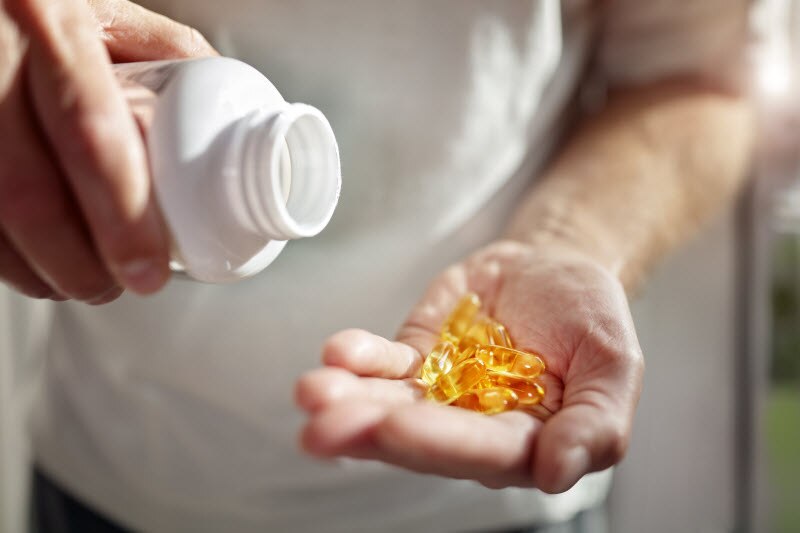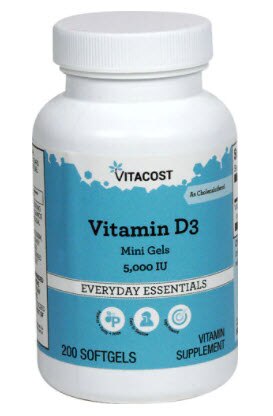Millions of Americans have marveled at the youthful energy of Dr. Anthony Fauci, the 79-year-old director of the National Institute of Allergy and Infectious Diseases.
How has Fauci stayed healthy during the coronavirus pandemic? In a recent Instagram Live interview, Fauci said making sure his body has enough vitamin D partially is responsible for the spring in his step.
“If you are deficient in vitamin D, that does have an impact on your susceptibility to infection,” he said.
New Jersey-based registered dietitian Erin Palinski-Wade – a certified diabetes educator and author of “Belly Fat Diet For Dummies” — says vitamin D offers numerous health benefits beyond protection from COVID-19.
“Vitamin D plays a large role in bone formation, and can also impact mood regulation and the immune system,” she says.
However, too much vitamin D can actually be dangerous to your health.
The danger of too much vitamin D
Taking excessive levels of vitamin D – usually in the form of supplementation – can lead to a range of side effects. Some of these pose serious health consequences.
“Very high levels of vitamin D may lead to toxicity,” Palinski-Wade says.
The Mayo Clinic says taking more than 4,000 IU a day might lead to vitamin D side effects that include:
- Nausea and vomiting
- Poor appetite
- Constipation
- Weakness
- Weight loss
- Confusion and disorientation
In some cases, high levels of vitamin D can result in more serious issues, such as heart rhythm problems and kidney damage, according to the Mayo Clinic.
Palinski-Wade notes that vitamin D toxicity can actually impede bone density – potentially undermining one of the chief aims of taking vitamin D supplements in the first place.
In fact, a 2019 study published in the Journal of the American Medical Association (JAMA) found that many people who took large amounts of vitamin D every day actually ended up with lower bone density than before they began the regimen.
In rare cases, taking too much of a vitamin D supplement can cause hypercalcemia, a condition where too much calcium builds up in the blood. This can lead to deposits in the arteries or soft tissues.
Other studies have found additional risks associated with getting too much vitamin D. For example, older women who take too much vitamin D are at greater risk for falls and fractures, according to 2010 study published in JAMA.
Finally, the Mayo Clinic notes that vitamin D supplements may interact poorly with a host of medications, ranging from cholesterol medication and anticonvulsants to heart and blood pressure drugs.
Getting the right amount of vitamin D
So, how much vitamin D do we need?
The Centers for Disease Control and Prevention notes that there is “some disagreement” over how much vitamin D a person should get. It says current recommendations from the Institute of Medicine suggest:
- 200 international units of vitamin D daily from birth through age 50
- 400 international units for those ages 51–70
- 600 international units for those who are older than 70
By contrast, the U.S. Department of Agriculture simply recommends 600 international unit a day for all people ages 1 to 70.
People with dark skin and those exposed to insufficient UV B radiation often are urged to consume extra vitamin D.
If you are unsure of how much vitamin D to take, Palinski-Wade has a simple suggestion: Skip vitamin D supplements and turn instead to foods rich in the vitamin.
Such foods include:
- Fatty fish such as salmon and tuna
- Mushrooms
- Egg yolks
- Foods fortified with vitamin D, such as yogurt and milk
“It is extremely rare to get too much vitamin D from food alone,” Palinski-Wade says.
The National Institutes of Health offers a chart at its website listing various foods and how many international units of vitamin D they offer.
Some people with certain health conditions – such as Crohn’s disease or ulcerative colitis – may benefit from getting higher doses of vitamin D through supplementation. But because of the potential health risks associated with too much vitamin D, it is important to seek a doctor’s advice before taking such supplements.




